Mad Hedge Technology Letter
December 18, 2020
Fiat Lux
Featured Trade:
(TECH IN 2021)
(ZM), (WORK), (NVDA), (AMD), (QCOM), (SQ), (PYPL), (INTU), (PANW), (OKTA), (CRWD), (SHOP), (MELI), (ETSY), (NOW), (AKAM), (TWLO)

Mad Hedge Technology Letter
December 18, 2020
Fiat Lux
Featured Trade:
(TECH IN 2021)
(ZM), (WORK), (NVDA), (AMD), (QCOM), (SQ), (PYPL), (INTU), (PANW), (OKTA), (CRWD), (SHOP), (MELI), (ETSY), (NOW), (AKAM), (TWLO)

The tech sector has been through a whirlwind in 2020, and if investors didn’t lose their shirt in March and sell at the bottom, many of them should have ended the year in the green.
My prediction at the end of 2019 that cybersecurity and health cloud companies would outperform came true.
What I didn’t get right was that almost every other tech company would double as well.
Saying that video conferencing Zoom (ZM) is the Tech Company of 2020 is not a revelation at this point, but it shows how quickly a hot software tool can come to the forefront of the tech ecosystem.
M&A was as hot as can be as many cash-heavy cloud firms try to keep pace with the Apples and Googles of the tech world like Salesforce’s purchase of workforce collaboration app Slack (WORK).
Not only has the cloud felt the huge tailwinds from the pandemic, but hardware companies like HP and Dell have been helped by the massive demand for devices since the whole world moved online in March.
What can we expect in 2021?
Although I don’t foresee many tech firms making 100% returns like in 2020, they are still the star QB on the team and are carrying the rest of the market on their back.
That won’t change and in fact, tech will need smaller companies to do more heavy lifting come 2021.
The only other sector to get through completely unscathed from the pandemic is housing, and unsurprisingly, it goes hand in hand with converted remote offices that wield the software that I talk about.
The world has essentially become silos of remote offices and we plug into the central system to do business with each other with this thing called the internet.
In 2021, this concept accelerates, and cloud companies could easily check in with 20%-30% return by 2022. The true “growth” cloud firms will see 40% returns if external factors stay favorable.
This year was the beginning of the end for many non-tech businesses and just because vaccines are rolling out across the U.S. doesn’t mean that everyone will ditch the masks and congregate in tight, indoor places.
There is nothing stopping tech from snatching more turf from the other sectors and the coast couldn’t be clearer minus the few dealing with anti-trust issues.
I can tell you with conviction that Facebook, Google, Apple, and Amazon have run out of time and meaningful regulation will rear its ugly head in 2021.
We are already seeing the EU try to ratchet up the tax coffers and lawsuits up the wazoo on Facebook are starting to mount.
Eventually, they will all be broken up which will spawn even more shareholder value.
Even Fed Chair Jerome Powell told us that he thinks stocks aren’t expensive based on how low rates have become.
That is the green light to throw new money at growth stocks unless the Fed signal otherwise.
As we head into the 5G world, I would not bet against the semiconductor trade and the likes of Nvidia (NVDA), AMD (AMD), Qualcomm (QCOM) should overperform in 2021.
Communication is the glue of society and communications-as-a-platform app Twilio (TWLO) will improve on its 2020 form along with cloud apps that make the internet more efficient and robust like Akamai (AKAM).
Workflow cloud app ServiceNow (NOW) is another one that will continue its success.
The uninterrupted shift to the cloud will not stop in 2021 and will be a strong growth driver for numerous tech companies next year.
I will not say this is a digital revolution, but as corporate executives realize they haven’t spent enough on the cloud in the lead-up to the pandemic and must now play catch-up in order to satisfy new demands in the business.
The most recent CIO survey was the thesis that cloud and digital adoption at 10% of enterprise and 15% of consumer spend entering 2020 would continue to accelerate post-pandemic and into 2021-2022.
A key dynamic playing out in the tech world over the next 12 to 18 months is the secular growth areas around cloud and cybersecurity that are seeing eye-popping demand trends.
Consumers will still be stuck at home, meaning e-commerce will still be big winners in 2021 such as Shopify (SHOP), Etsy (ETSY), and MercadoLibre (MELI).
The reliance on e-commerce will open the door for more tech companies to participate in the digital flow of transactions and the U.S. will finally catch up to the Chinese idea of paying through contactless instruments and not cards.
This highly benefits U.S. fintech companies like Square (SQ) and PayPal (PYPL). Intuit (INTU) and its accounting software is another niche player that will dominate.
Intuit most recently bought Credit Karma for $8.1 billion signaling deeper penetration into fintech.
Since we are all splurging online, we need cybersecurity to protect us and the likes of Palo Alto Networks (PANW), Okta (OKTA), and CrowdStrike Holdings, Inc. (CRWD).
The side effect of the accelerating shift to digital and cloud are troves of data that need to be stored, thus anything related to big data will also outperform.
Most of the information created (97%) has historically been stored, processed, or archived.
As new mountains of digital gold are created, we expect AI will have an increasingly critical role.
I believe that 2021 will finally see the integration of 5G technology ushering in another wave of digital migration and data generation that the world has never seen before and above are some of the tech companies that will make out well.
The average household is using 38x the amount of internet data they were using ten years ago and this is just the beginning.
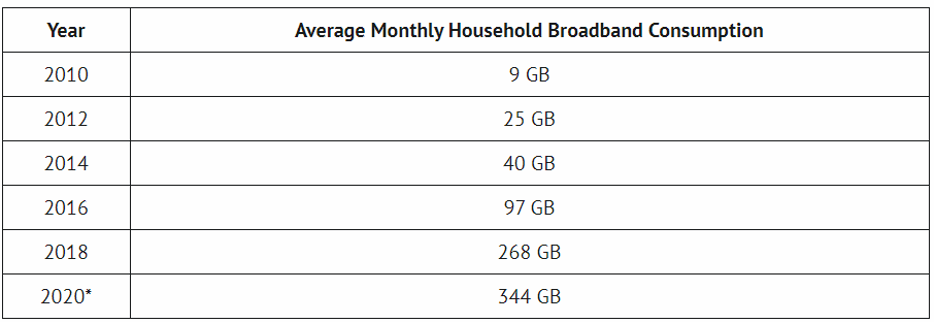
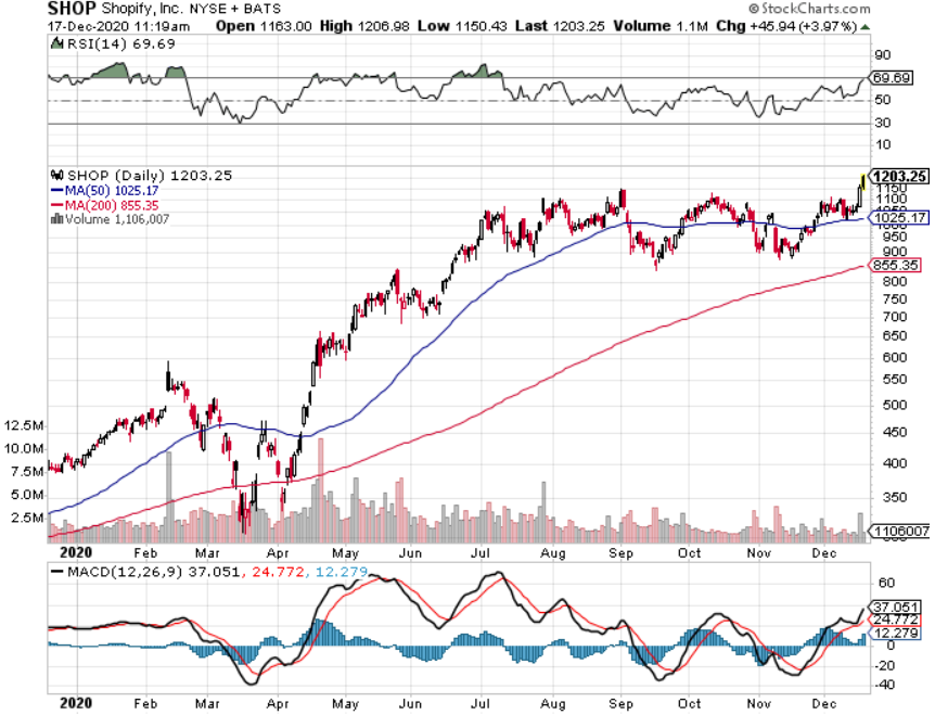

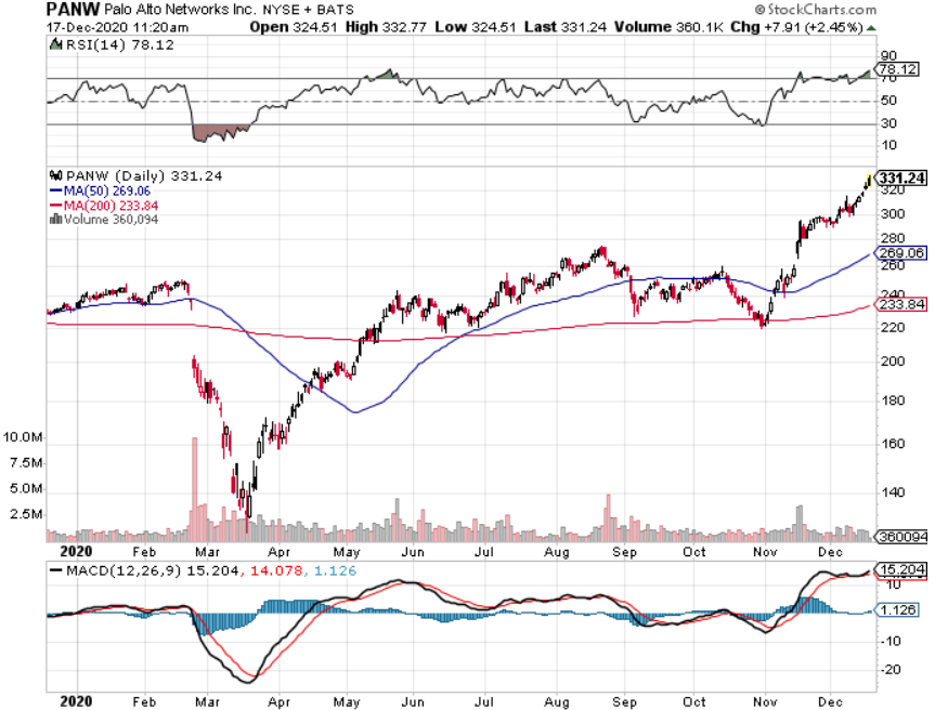
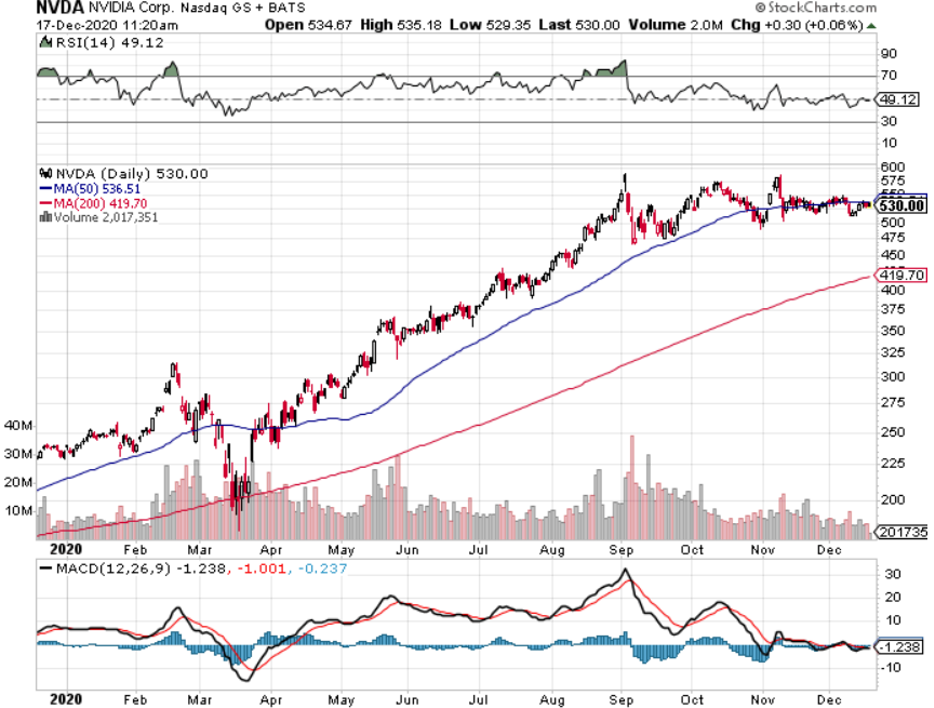
Mad Hedge Technology Letter
May 18, 2020
Fiat Lux
Featured Trade:
(CHINA’S BIG SEMICONDUCTOR PLAY),
(SMH), (SOXX), (DOCU), (AKAM), (NVDA), (AMD), (XLNX)

We received a convincing data point as to why we trade cloud companies and not the semiconductor chips.
The rift between blacklisted telecom equipment giant Huawei Technologies and the U.S. administration has had a dramatic side-effect on the business models of U.S. chip companies.
The U.S. commerce department now will require licenses for sales to Huawei of semiconductors made abroad with U.S. technology signaling more turbulent times ahead.
Huawei is the Chinese smartphone maker and telecom provider who has stolen intellectual property from the West and used mammoth subsidies funded by the Chinese communist party to build itself into one of the premier telecom equipment sellers and number two maker of smartphones in the world.
I seldom issue trade alerts on semiconductor chip companies because I'd rather not compete with the Chinese communist party and their capital funding capacity.
China is hellbent on subsidizing its own chip capacity as many Western chip companies are blocked from doing deals with them.
A recent example is the Chinese communist party injecting $2.25 billion into a Semiconductor Manufacturing International Corp. wafer plant to ramp up development in the sector.
To read about this, click here.
Exploiting the economic freedom and laws of the West has worked out perfectly for Chinese tech enabling them to develop juggernauts like Tencent and Baidu.
In fact, state-sponsored hacking of Western intellectual property is not considered a malicious activity in China.
There is the Chinese notion that everything is fair game in business and war and protecting company secrets falls on the shoulders of the cybersecurity sector.
To read more about the fallout in the West from China’s aggressive trade strategy, click here.
The concept that you should only blame yourself if you allow your secrets to get stolen prevails in China.
The consequences are impactful with U.S. chip companies suffering large drops in revenue without notice.
Leading up to the coronavirus, chip companies experienced a revenue slide of 12% in 2019 to $412 billion largely due to the trade war.
An example is Xilinx Inc. (XLNX) who will fire 7% of its workforce citing lower revenue from Huawei and delayed adoption of superfast 5G networks.
Along with the West getting smacked by the trade war, the ripple effect of increased uncertainty and guide-downs across the semiconductor supply stems from China’s economy being hit even worse than the U.S. economy.
There are no winners here and it will be a hard slog back from the nadir.
Either way, the sabre-rattling doesn’t stop here and each tweet and counterpunch will cause heightened volatility in chip shares.
Then consider that the existence of supply chains will most likely uproot, and we got indication of that type of activity with Taiwan Semiconductor’s (TSM) announcement to build a new chip factory in Phoenix.
To read more about this impactful deal then click here.
This would have never happened during prior administrations where all manufacturing was offshored to China.
As it stands, China has been circumventing existing U.S. law to clampdown chip sales by buying U.S. chips from 3rd party channels.
Once many of the supply chains come back, it will be almost impossible for Chinese to procure those same chips.
The Taiwan semiconductor manufacturing facility in Arizona will ultimately employ 1,600 high-tech workers.
Building is slated for 2021 with production targeted to begin in 2024.
Moving forward, the U.S. administration will make it implausible for many U.S. chip companies to offshore using the reasons of national security and domestic job demand to ensure that many factories are rerouted back to U.S. shores.
The boom and bust nature of chip companies make for treacherous spikes and drops in share prices.
The insane volatility is why I stay away from them as the Mad Hedge Technology Letter mainly opts for short-term options trades.
Nvidia (NVDA) and AMD (AMD) are great individual chip stocks that I would encourage readers to buy and hold.
Another option is to just park your money in the semi ETF VanEck Vectors Semiconductor ETF (SMH) or iShares PHLX Semiconductor ETF (SOXX).
On the flip side, cloud stock’s backbone of recurring monthly revenue is just too savory.
The constant cash flow with minimal international risk along with pristine balance sheets is what makes U.S. cloud companies top on the list of trade alert candidates.
That won’t stop anytime soon as the pandemic has offered us more conviction into the moat between cloud stocks and the rest of technology.
I apologize if I sound like a broken record, but I love my Akamai’s (AKAM) and DocuSign’s (DOCU), they have the growth portfolio that backs up my thesis.
Buy cloud stocks on the dip.
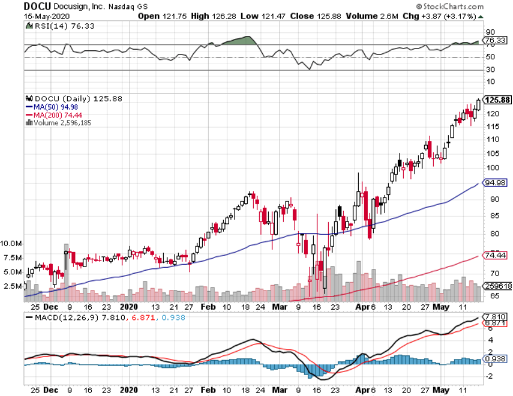
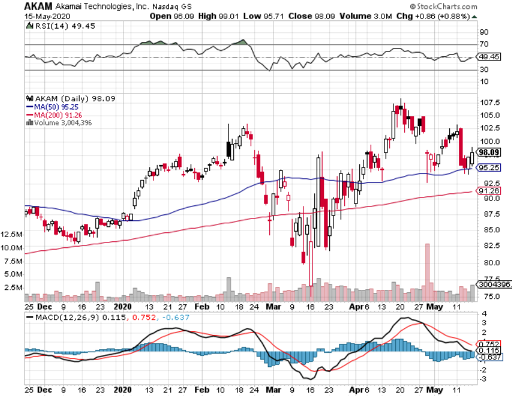
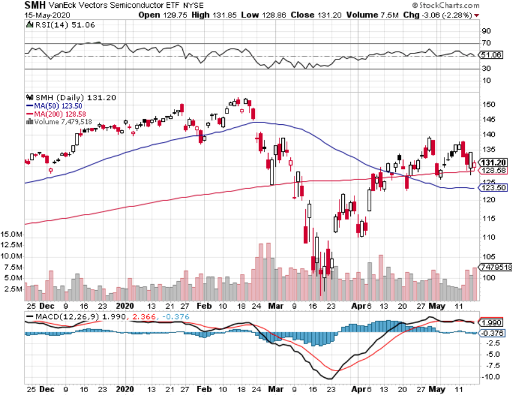
Mad Hedge Technology Letter
November 20, 2019
Fiat Lux
Featured Trade:
(MY CURRENT TECHNOLOGY TRADING STRATEGY),
(GOOGL), (MSFT), (APPL), (ADBE), (AKAM), (VEEV), (FTNT), (WKDAY), (TTD)

Some might say that we were due for a revaluation of growth tech stocks.
They have contributed greatly in this nine-year bull market.
Profit-generating software stocks are the order of the day.
Tech has led the overall market higher after projected quarterly earnings growth of -9% came in better than expected at -5%.
We have ebbed and flowed from pricing in a full-out recession in mid-2020 to now believing a recession is further off than first thought.
The pendulum swing ruptured many growth stocks from Workday (WKDAY) to The Trade Desk, Inc. (TTD) plummeting 30%.
We have retraced some of those losses but momentum in share appreciation has shifted to the perceived safer variation of tech stocks.
Investors have cut volatility and headed into bulletproof companies of Apple (AAPL), Google (GOOGL), and Microsoft (MSFT).
These companies have significant competitive advantages, Teflon balance sheets, and print money.
The tech markets just about priced in the U.S - China trade war in the fall as broad-based volatility plummeted because of optimism around making a deal.
This, in turn, has boosted chips stocks along with investors front running the 5G revolution and the administration granting Huawei a reprieve was a cherry on top.
The Mad Hedge Technology Letter has taken every dip to initiate new longs in safe trades like software companies Adobe (ADBE) and Veeva Systems (VEEV).
Tech is at the point that all loss-making companies are out of the running for tech alerts because the moment there is a recession scare, these shares drop 10% and often don’t stop until they lose 30%.
Now there is a deeply embedded set of narrow tech leadership by a few dominant tech companies buttressed by a select set of second-tier software stocks.
I would put PayPal (PYPL) and Twitter (TWTR), which I currently have open trades on, in the ranks of the second tier and they should do well as long as economic growth does better than expected.
Their share prices dipped on weak guidance and the bad news appears to have been shaken out of these names.
Professional investors could also be hanging on to meet end-of-year performance targets.
I do expect unique entry points on software stocks that drop after bad future guidance.
Profitability has moved to the fore as the biggest factor in holding a name or not.
Newly minted IPOs have fared even worse showing the markets' waning appetite for loss makers like Uber (UBER) and Lyft (LYFT).
Loss-making companies often tout their ability to change the world and disrupt industry, but that has been discovered as nothing more than a ruse.
They aren’t disrupting the way we change the world. For example, Uber is a dressed-up taxi service and the new CEO has failed to create any new momentum in the unit economics that spectacularly fail by any type of metric.
Even worse for these growth stocks, as the economy starts to falter, there will be even less appetite for them, and even more appetite for safer tech stocks.
A worst-case scenario would see Uber drop to $10 and Lyft to $20.
New all-time highs have crystalized with Google (GOOGL) under the gauntlet of regulation hysteria displaying the domination of these big tech machines.
The ongoing, consistent rotation out of growth and into value hasn’t run its course yet and fortunately, by identifying this important trend, our readers will be well placed to advantageously position themselves going into 2020.
Growth stocks won’t make a comeback anytime soon and deteriorating conditions could trigger renewed synchronized global monetary policy easing and central bank stimulus.
And yes, more negative rates.
I believe Oracle (ORCL), Fortinet (FTNT), Akamai Technologies, Inc. (AKAM) could weather the storm next year.
Tech growth is slowing and trade uncertainty is high, and readers must have a sense of urgency to avoid the losers in this scenario.
U.S. economic growth could slow to 1.3% next year, avoiding a recession, and the lack of enterprise spend will reduce software sales and combine that with peak smartphone growth and it won’t be smooth sailing.
The Mad Hedge Technology Letter has the pulse of the tech market and will show you how to navigate this minefield.
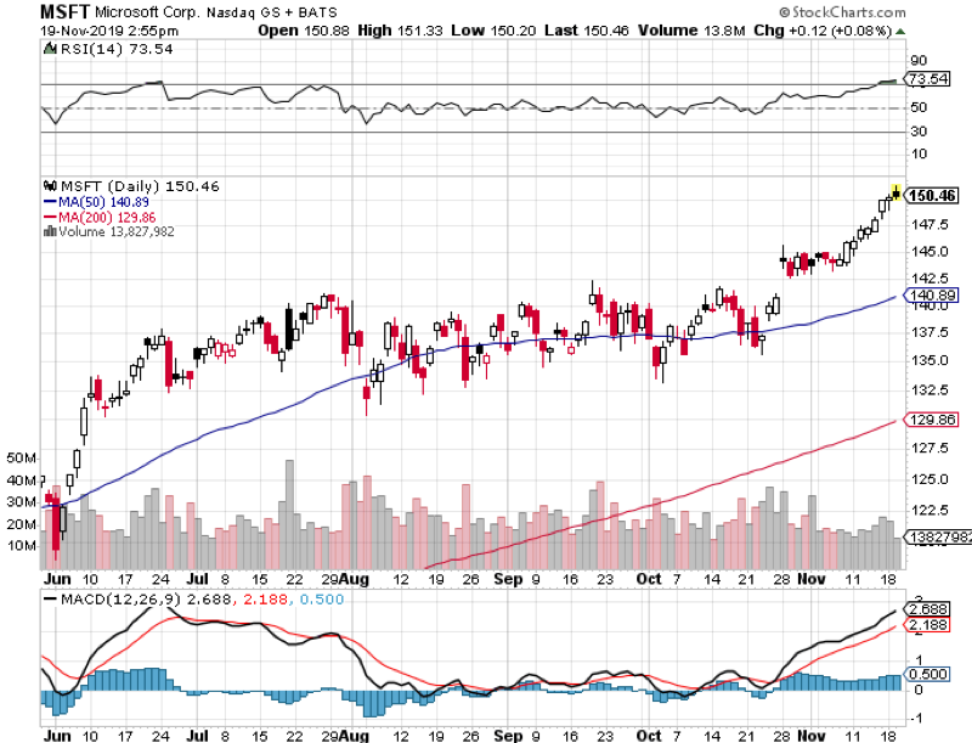
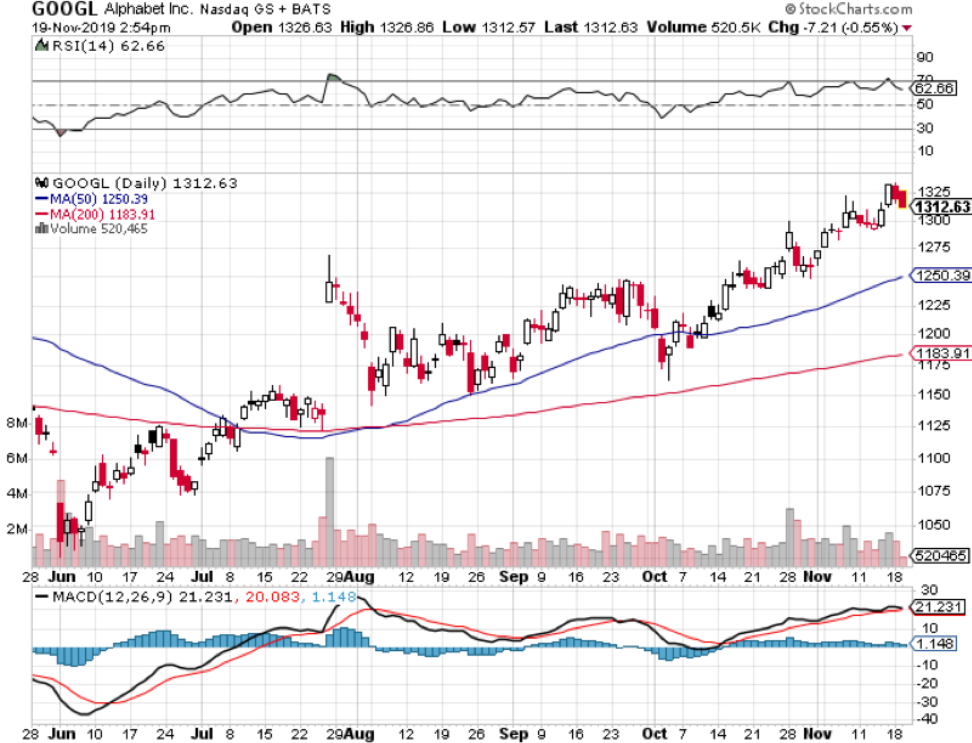
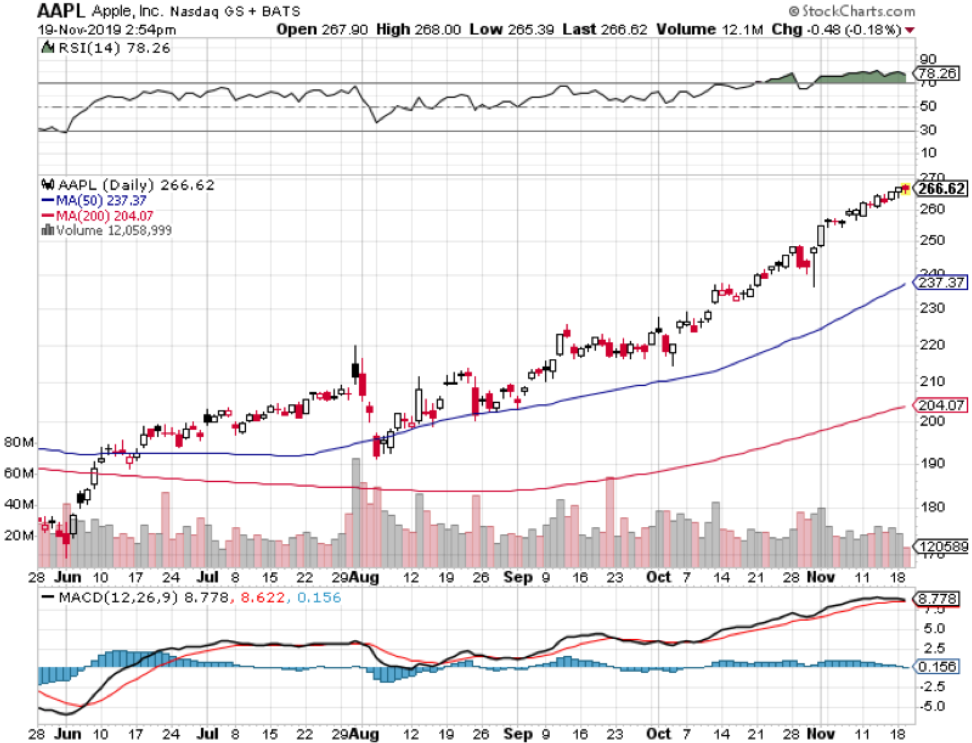
Legal Disclaimer
There is a very high degree of risk involved in trading. Past results are not indicative of future returns. MadHedgeFundTrader.com and all individuals affiliated with this site assume no responsibilities for your trading and investment results. The indicators, strategies, columns, articles and all other features are for educational purposes only and should not be construed as investment advice. Information for futures trading observations are obtained from sources believed to be reliable, but we do not warrant its completeness or accuracy, or warrant any results from the use of the information. Your use of the trading observations is entirely at your own risk and it is your sole responsibility to evaluate the accuracy, completeness and usefulness of the information. You must assess the risk of any trade with your broker and make your own independent decisions regarding any securities mentioned herein. Affiliates of MadHedgeFundTrader.com may have a position or effect transactions in the securities described herein (or options thereon) and/or otherwise employ trading strategies that may be consistent or inconsistent with the provided strategies.
This site uses cookies. By continuing to browse the site, you are agreeing to our use of cookies.
OKLearn moreWe may request cookies to be set on your device. We use cookies to let us know when you visit our websites, how you interact with us, to enrich your user experience, and to customize your relationship with our website.
Click on the different category headings to find out more. You can also change some of your preferences. Note that blocking some types of cookies may impact your experience on our websites and the services we are able to offer.
These cookies are strictly necessary to provide you with services available through our website and to use some of its features.
Because these cookies are strictly necessary to deliver the website, refuseing them will have impact how our site functions. You always can block or delete cookies by changing your browser settings and force blocking all cookies on this website. But this will always prompt you to accept/refuse cookies when revisiting our site.
We fully respect if you want to refuse cookies but to avoid asking you again and again kindly allow us to store a cookie for that. You are free to opt out any time or opt in for other cookies to get a better experience. If you refuse cookies we will remove all set cookies in our domain.
We provide you with a list of stored cookies on your computer in our domain so you can check what we stored. Due to security reasons we are not able to show or modify cookies from other domains. You can check these in your browser security settings.
These cookies collect information that is used either in aggregate form to help us understand how our website is being used or how effective our marketing campaigns are, or to help us customize our website and application for you in order to enhance your experience.
If you do not want that we track your visist to our site you can disable tracking in your browser here:
We also use different external services like Google Webfonts, Google Maps, and external Video providers. Since these providers may collect personal data like your IP address we allow you to block them here. Please be aware that this might heavily reduce the functionality and appearance of our site. Changes will take effect once you reload the page.
Google Webfont Settings:
Google Map Settings:
Vimeo and Youtube video embeds:
